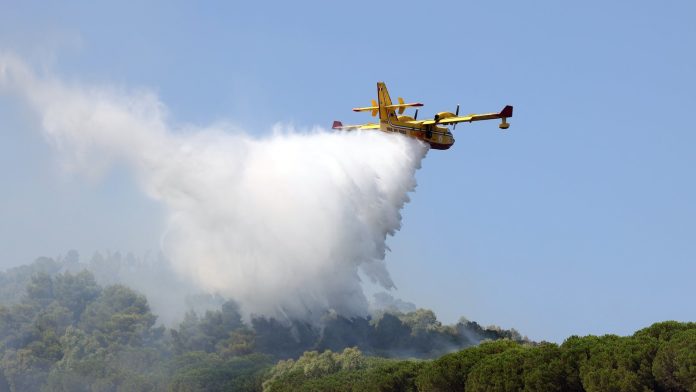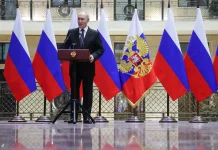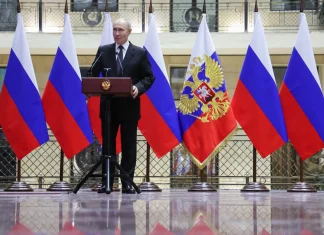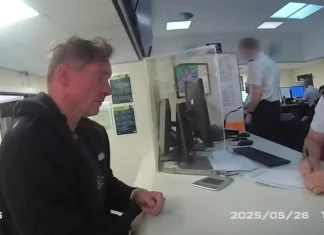Fires of Fury: When Europe’s Summer Blaze Writes the Story of Mount Vesuvius and Southern France
In the shadow of one of history’s most famed volcanoes, Mount Vesuvius, smoke billowing and flames licking the hillside have recently rewritten the narrative of this iconic landmark. Just a stone’s throw from the ancient ruins of Pompeii, firefighters face not only the destructive power of wildfire but the challenge of safeguarding a place of both natural beauty and profound cultural significance.
The Fiery Flanks of Vesuvius
Mount Vesuvius, with its ominous silhouette against the Neapolitan sky, is a natural spectacle that draws hundreds of thousands annually. In 2024 alone, nearly 620,000 visitors ascended its slopes, eager to glimpse the crater that once obliterated Pompeii in 79 AD. But this summer, instead of visitors marking their boots on winding trails, silence has fallen. The national park authorities issued an unprecedented closure of all hiking routes, bowing to the urgency of combatting a wildfire that erupted on the volcano’s flanks.
Italian firefighters have mobilized with profound determination. Images shared on official channels show 12 teams deployed across the burning terrain, paired with six Canadair aircraft — the iconic firefighting planes that scoop water from the sea and douse infernos from above. From a strategic vantage, drones circle overhead, providing critical intelligence about the fire’s spread through dense Mediterranean brush.
“Safety is our foremost priority, but this is also about protecting a sacred landscape,” said Marco Russo, a Vesuvius National Park ranger who has worked here for over two decades. “Our park is a living archive of nature and history. To see it engulfed by flames like this is heartbreaking.”
Meanwhile, the ancient city of Pompeii stands vigil. Smoke columns are visible from the site’s archaeological terraces, where tourists continue to walk amid history. Visitors like Anaïs, a student from Spain, express mixed feelings: “It’s surreal to see the smoke while standing in a place frozen in time. The connection between destruction now and in the past hits you deeply.”
Heatwave and Flames: The Mediterranean’s Fiery Pulse
Vesuvius is not alone in undergoing this fiery trial. Across the border, the south of France is gripped by a wildfire of monumental scale — one of the worst in the region in half a century. In Aude, a southern department famed for its vineyards and sun-drenched villages, flames have consumed over 16,000 hectares. It’s a strange twist of fate: while tourists flock to the Mediterranean sunshine, fierce fires rage just miles away.
Christian Pouget, prefect of Aude, paints a stark picture: “The heatwave hammering France — expected to reach 40°C in places — fuels both the earth and our worries. The tramontane winds are dry and relentless, fanning embers in unpredictable ways. The risk of flare-ups keeps us on red alert.”
The courage and physical toll on firefighters is palpable. Around 1,300 firefighting personnel have stood in the breach, battling not just the flames but exhaustion and relentless heat. Many bear scars — with nineteen injured and several seriously burnt, their sacrifices underscore the human cost behind the headlines.
Communities in the Cinders
In quieter moments away from emergency command centers, stories of loss emerge with gut-wrenching clarity. Emmanuelle Bernier, a local shepherd from Fontjoncouse, offers a window into the devastation unfurling beyond the fire lines. Her beloved goats, seventeen of them, perished in the flames. Many were pregnant, carrying the promise of life itself.
“When I came back, I just stood there, staring at the ruins of their pen,” she shares. Her voice trembles with both anger and grief. “This farm, this flock… it was my whole life. Now everything changes. I don’t know if I can do this anymore.”
Yet amidst the ruins, a faint thread of resilience glimmers. “I see new shoots in the charred ground. Life finds a way,” Emmanuelle says, looking toward the horizon as if seeking hope through the smoke.
Lessons and Reflections: Climate Crisis in Flames
These wildfires, while devastating on their own, are emblematic of a larger, increasingly urgent crisis that Europe and indeed the entire globe face: the worsening impact of climate change. Scientists warn that heatwaves are intensifying — hotter, longer, and more frequent — stripping the land of moisture and laying out a tinderbox across regions once thought immune to such extremes.
“We are witnessing a paradigm shift in what is ‘normal’ for summer climate in Europe,” asserts Dr. Lydia Müller, a climate scientist based in Geneva specializing in fire regimes. “Events like these will become more common unless we address root causes and bolster adaptive measures in wildfire management.”
Firefighters and environmentalists alike caution that these events are not isolated. The Mediterranean basin is warming faster than the global average, and ecosystems are straining to keep pace. The fires incinerate not just grass and trees, but centuries-old traditions, livelihoods, and fragile biodiversity.
What Can We Do? What Will We Do?
Perhaps the real question is: How do we live with a changing landscape that demands new respect and care? What responsibilities do we hold, not just as local nations, but as a global community witnessing these flames from afar?
The plight of a shepherd in rural France and the smoke darkening Vesuvius’ slopes serve as reminders that fire is not just a force of destruction but a clarion call. To rethink land stewardship, to invest in early warning systems, and to push for meaningful climate action — these are not abstract policies but lifelines for communities and nature.
Travelers visiting Pompeii or the vineyards of southern France now carry a story beyond sightseeing: How beauty and disaster coexist and compel us to reflect on our fragile place in the world’s shifting tapestry.
Next time you gaze upon a volcano, or smell the earthy scent after rain, ask yourself: How might these elements change in the decades ahead? What stories will the land tell? And how will we answer its urgent, blazing call?










